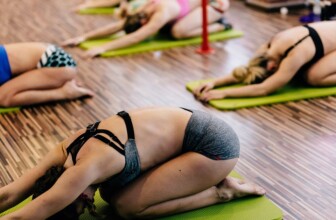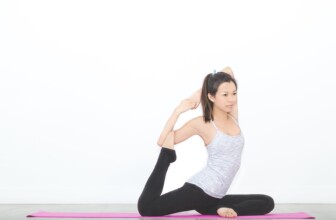Seeing Clearly: Innovative Strategies for Vision Improvement
Vision is one of our most essential senses, providing us with information that is crucial for daily life and activities. With the evolution of technology, lifestyle changes, and an increasing awareness of eye health, innovative strategies have emerged to continue improving and optimizing vision. This extensive article delves into various methods, technologies, and lifestyle choices that can lead to vision improvement.
Table of Contents
- Understanding Vision and Eye Health
- Common Vision Problems and Their Causes
- Innovative Strategies for Vision Improvement
- 3.1. Nutrition and Diet
- 3.2. Vision Therapy
- 3.3. Technological Interventions
- 3.4. Mindfulness and Eye Exercises
- Lifestyle Changes for Better Vision
- Case Studies: Real-Life Examples of Vision Improvement
- Q&A Section
- Frequently Asked Questions (FAQ)
- Resources
- Conclusion
- Disclaimer
1. Understanding Vision and Eye Health
Good vision is vital for a fulfilling life. It allows us to engage with our environment, perform tasks, and communicate effectively. Vision involves not just the eyes but also the brain, which processes visual information. Understanding the anatomy of the eye, such as the cornea, lens, retina, and optic nerve, and how these components work together helps us appreciate the complexities of sight.
The Importance of Eye Health
Maintaining eye health is crucial as the eyes are susceptible to various ailments. Over 2.7 billion people worldwide suffer from poor vision, and this number is expected to rise with digital screen usage. Scheduled eye exams and preventive measures can help avert severe eye conditions like glaucoma, cataracts, and macular degeneration.
2. Common Vision Problems and Their Causes
A variety of factors can contribute to vision problems. Understanding these can help you take preventive measures.
2.1. Refractive Errors
Myopia (Nearsightedness): Difficulty seeing distant objects. It is often caused by the eyeball being too long or the cornea having too steep a curve.
Hyperopia (Farsightedness): Difficulty focusing on close objects, often due to a short eyeball or flat cornea.
Astigmatism: Blurred vision due to an irregular shape of the cornea or lens.
2.2. Age-Related Macular Degeneration (AMD)
A leading cause of vision loss in older adults, AMD affects the retina's macula, leading to central vision impairment.
2.3. Cataracts
Clouding of the lens leads to blurred vision. Cataracts can develop due to aging, excessive sun exposure, or certain medications.
2.4. Glaucoma
Increased pressure in the eye can damage the optic nerve, leading to vision loss.
2.5. Diabetic Retinopathy
A complication of diabetes leading to damage of the blood vessels in the retina.
3. Innovative Strategies for Vision Improvement
Innovative strategies are crucial in addressing and improving vision. Various methods encompass dietary changes, therapy, new technologies, and mental training.
3.1. Nutrition and Diet
Diet plays a significant role in eye health. Certain nutrients have been shown to protect against age-related eye diseases.
Key Nutrients:
- Lutein and Zeaxanthin: Found in green leafy vegetables, these carotenoids filter harmful blue light and protect against AMD.
- Omega-3 Fatty Acids: Found in fish, these promote retinal health and may prevent dry eye syndrome.
- Vitamins C and E: Antioxidants that combat oxidative stress.
Dietary Recommendations:
- Incorporate colorful fruits and vegetables, like carrots, spinach, blueberries, and peppers.
- Prioritize fatty fish like salmon and sardines for their omega-3 content.
- Stay hydrated to maintain tear production and eye moisture.
3.2. Vision Therapy
Vision therapy is a customized program of visual activities designed to improve visual skills and processing. This can be especially beneficial for children with learning disabilities or issues with eye coordination.
Methods Used:
- Visual exercises to improve focus and eye tracking.
- Prism lenses to aid in aligning eyes correctly.
- Use of computer programs that challenge the brain's processing of visual information.
3.3. Technological Interventions
Recent advances in technology offer groundbreaking options for vision correction and improvement.
Smart Glasses: Devices like augmented reality (AR) glasses can assist low-vision individuals by enhancing their field of vision and providing magnification.
Vision Apps: Numerous applications claim to enhance vision through specific exercises but should be used under the guidance of a professional.
Laser Surgery: Refractive surgeries, like LASIK, have become increasingly refined, offering patients quick recovery and minimal discomfort.
3.4. Mindfulness and Eye Exercises
Practicing mindfulness and incorporating eye exercises into daily routines can significantly improve not just vision but overall wellbeing.
Eye Exercises to Consider:
- The 20-20-20 Rule: Every 20 minutes, look at something 20 feet away for at least 20 seconds.
- Palming: Rubbing palms together and placing them gently over closed eyes to relieve strain.
- Focus Change Exercises: Cover one eye, focus on a near object, then switch to a distant object, repeating several times.
4. Lifestyle Changes for Better Vision
Making conscious lifestyle choices contributes significantly to improved vision.
4.1. Screen Time Management
In our digital age, screen time has dramatically increased. It's crucial to manage exposure to prevent digital eye strain.
Tips:
- Use screen filters to minimize blue light reflections.
- Maintain proper distance from screens (at least arm's length).
- Adjust display settings, such as brightness and contrast, to soothe the eyes.
4.2. Regular Eye Check-ups
Committing to routine eye care can detect problems early. Annual eye exams are recommended even for those without visible issues.
4.3. Protective Eyewear
Wearing sunglasses with UV protection when outdoors and blue light-blocking glasses during screen use can safeguard eye health.
4.4. Adequate Sleep
Rest is vital for eye health. Quality sleep rejuvenates the body and helps prevent eye fatigue.
5. Case Studies: Real-Life Examples of Vision Improvement
Case Study 1: Dietary Impact on Vision
John, a 55-year-old man, suffered from early-stage cataracts. Upon consulting with a nutritionist, he revamped his diet to include more dark leafy greens and omega-3-rich foods. Three months later, his symptoms improved, and his eye doctor noted less progression of cataract development.
Case Study 2: Vision Therapy for Children
Sarah, a 9-year-old girl, struggled with reading due to misaligned eyes (strabismus). After undergoing a vision therapy program tailored to her needs, involving eye-tracking exercises and coordination training, Sarah demonstrated marked improvement in her reading ability and eye alignment.
6. Q&A Section
Q1: How often should I get an eye exam?
A1: Adults should have eye exams every 1 to 2 years, while children should have exams every year once they start school.
Q2: Can I improve my vision naturally?
A2: While some methods may enhance visual comfort and efficiency, they may not reverse refractive errors like myopia or hyperopia.
Q3: Are there any apps that can help improve my vision?
A3: Several apps are designed for vision training and eye health, but it's essential to consult an eye care professional before using them extensively.
Q4: What role does smoking play in eye health?
A4: Smoking significantly increases the risk of developing cataracts and AMD as well as other general health problems.
7. Frequently Asked Questions (FAQ)
1. What lifestyle changes can support better vision?
Improving your diet, managing screen time, ensuring adequate sleep, and protecting your eyes with sunglasses can support vision health.
2. Can I reverse my vision problems without surgery?
Some vision problems may be mitigated through lifestyle changes and therapies, but refractive errors typically require surgical intervention for correction.
3. Are supplements necessary for good vision?
While a balanced diet typically provides adequate nutrition for healthy vision, some people may benefit from supplements containing vitamins A, C, E, and omega-3 fatty acids. It's best to consult a healthcare professional.
4. How does stress affect vision?
High stress levels can lead to eye strain, fatigue, and discomfort. Mindfulness techniques may help mitigate these effects.
8. Resources
| Source | Description | Link |
|---|---|---|
| American Optometric Association | Offers information on eye health and vision care. | aoa.org |
| VisionAware | Resource for individuals with vision loss, including tips and support. | visionaware.org |
| National Eye Institute | Government resource with research and education on eye health. | nei.nih.gov |
| National Eye Exam Month | Awareness campaign to promote regular eye exams. | National Eye Exam Month |
| EyeCare America | Provides eye care resources and assistance programs. | EyeCare America |
Conclusion
Vision improvement is a multifaceted endeavor encompassing nutrition, therapy, technology, and lifestyle alterations. By understanding the challenges posed by common vision problems, incorporating innovative strategies, and adhering to expert recommendations, individuals can significantly enhance their visual health.
The future may offer even more advanced technologies and strategies as researchers continue to explore ocular health. Remaining informed allows individuals to take proactive steps toward maintaining and improving their vision.
Disclaimer
This article is for informational purposes only and is not intended as medical advice. Always consult with a healthcare professional or eye care specialist for specific vision-related issues. Outcomes may vary based on individual conditions and adherence to recommendations.










